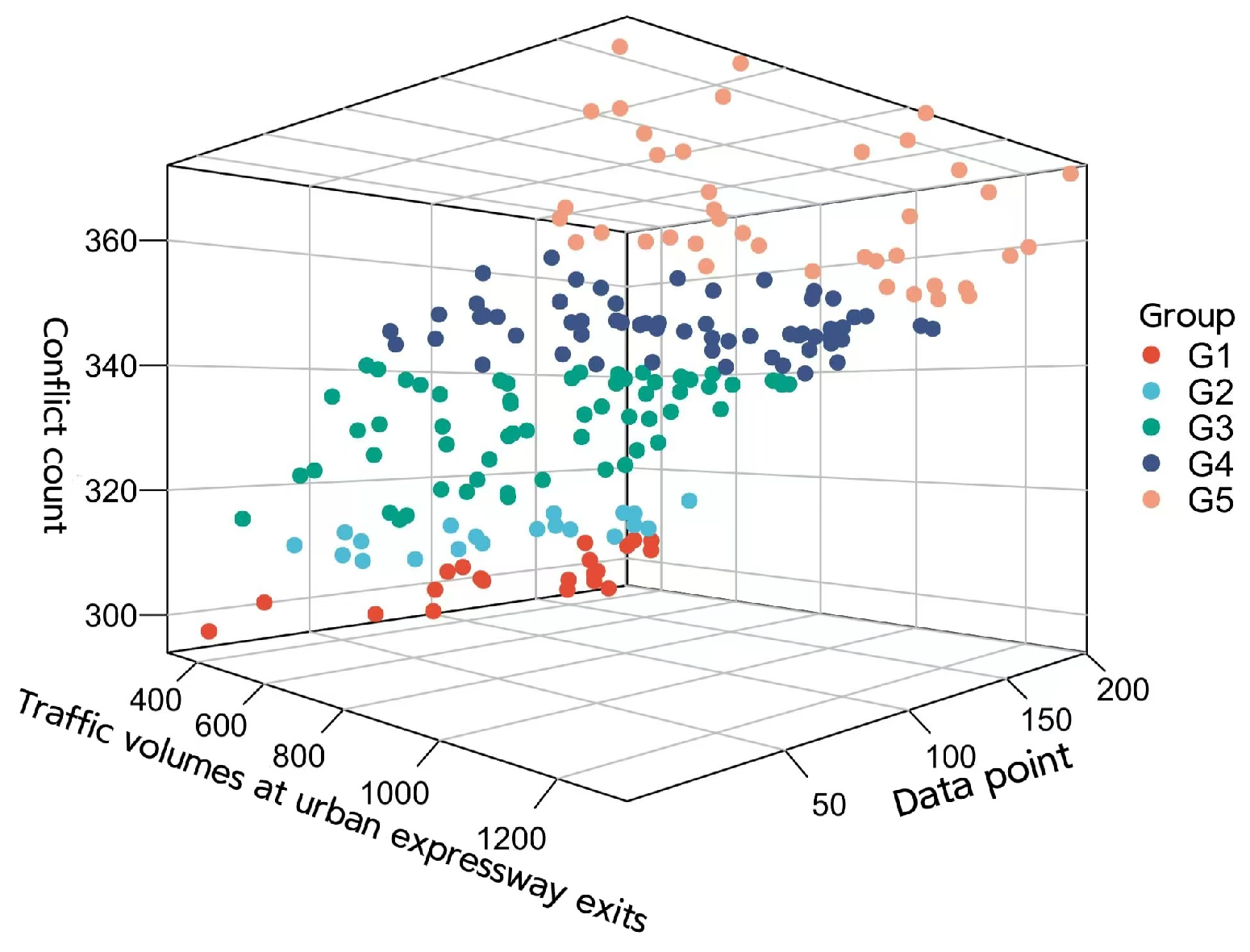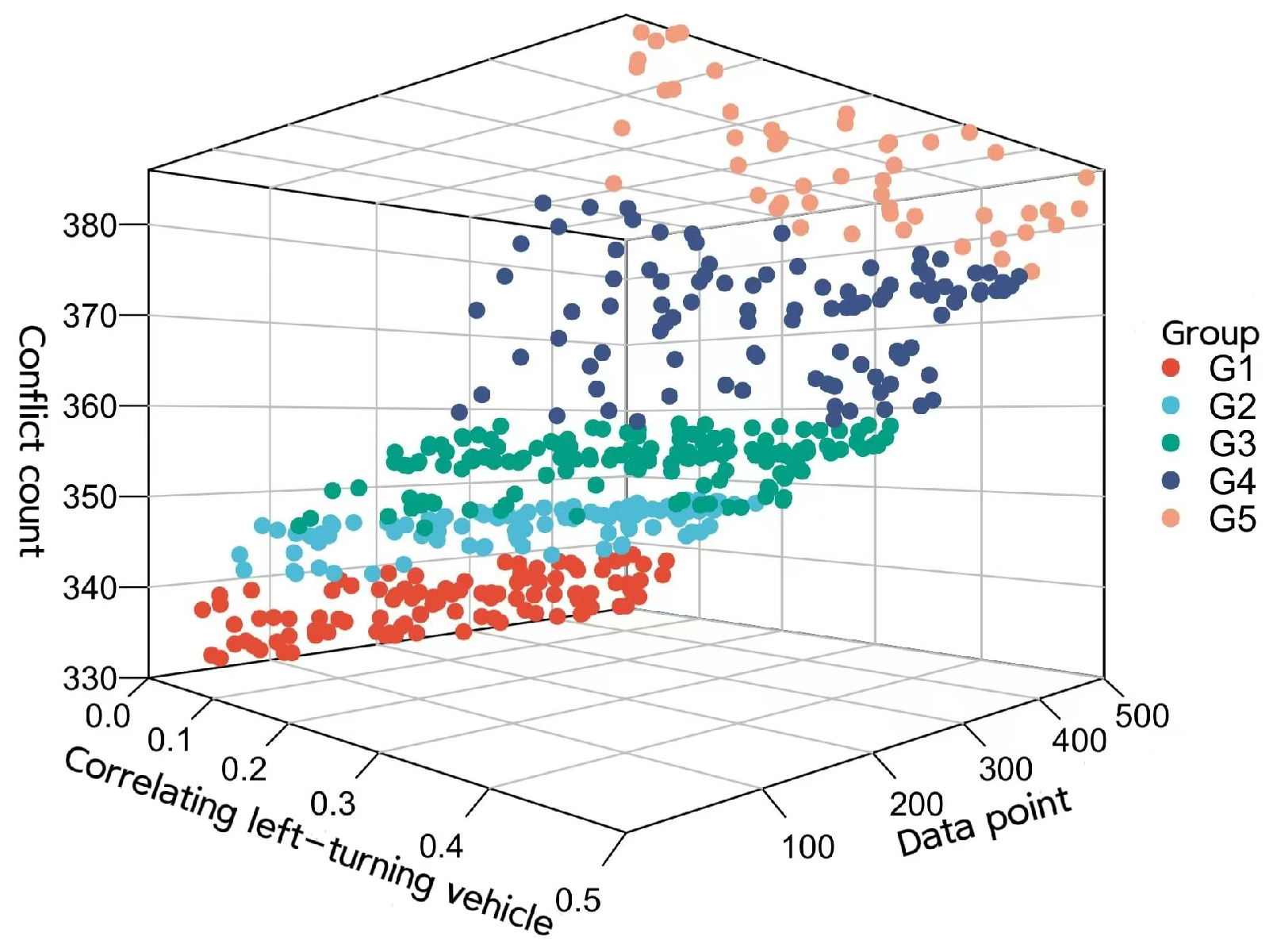As the mileage of urban expressways continues to increase and traffic volumes grow, the traffic flow from urban expressway exits significantly impacts the safety of downstream intersections. This situation often leads to numerous safety hazards during the integration process with the main roads, increasing pressure on downstream intersections and resulting in frequent traffic accidents. Strengthening traffic safety management at intersections downstream from urban expressway exits and improving their safety standards are crucial to reducing traffic accidents, ensuring the safety of people’s lives and property, and promoting safe travel.
The AHP–Matter-Element method and AHP-DEMATEL are distinct despite using the Analytic Hierarchy Process (AHP). The AHP–Matter-Element method integrates AHP with Matter-Element analysis, addressing uncertainties and multi-dimensional attributes. In contrast, AHP-DEMATEL combines AHP with the DEMATEL technique to explore interdependencies among factors. Considering the uncertainty and diversity of the indicators, the AHP–Matter-Element method is more suitable for this paper. Stefan Bilasco and Titus-Cristian Man proposed that the AHP framework can be applied to analyze the impact across five key dimensions: accident severity, occurrence mode, prevailing weather conditions, traffic restrictions, and road markings. This multi-level AHP analysis not only identifies high-risk hotspots but also confirms the effectiveness of the proposed spatial model [
1]. Priyank Trivedi et al. used AHP to integrate 40 expert inputs to determine criterion weights [
2]. Li Qingfu et al. proposed utilizing a cloud model to enhance the Analytic Hierarchy Process (AHP) risk assessment method, citing the unique characteristics of expert judgment language and the inherent ambiguity and randomness among various factors [
3]. Hao Sheng et al. used the Analytic Hierarchy Process (AHP) to establish the index hierarchy structure of the evaluation system, and the weight of each index was determined by combining it with the expert consultation method [
4]. Han Shixing et al. used the AHP–matter-element analysis method, and the service quality of college express collection points was evaluated, demonstrating its feasibility in this regard [
5]. Deng et al. selected 35 indicators with a range of values for an urban water security evaluation index system and validated it. They validated it using a physical element model with Chongqing as an example [
6]. Jiajun Chen et al. determined the objective weights of evaluation indexes and established an improved Matter-Element extension model [
7]. Traffic microsimulation software such as VISSIM6.0 and the Surrogate Safety Assessment Model (SSAM) are commonly utilized in traffic conflict analysis [
8,
9,
10]. Ghassan Suleiman et al. applied VISSIM to extract traffic operation parameters for their analysis [
11]. M. del Valle et al. employed SSAM for automatic conflict counting, categorizing conflicts by collision angles (crossing, rear-end), lane changes, and time-to-collision (TTC) severity levels [
12]. Hussein Mahdi Abed et al. evaluated safety at signalized intersections in urban areas of Hilla City using a combination of VISSIM and SSAM [
13]. Q Liang et al. adjusted 31 driving behavior parameters, generated various vehicle trajectory files, and utilized SSAM to assess conflict scenarios [
14]. A total of eleven evaluation criteria were selected for selecting evaluation indicators. Deng Mingjun et al. examined queue lengths towards a ramp and other directions. They utilized the particle swarm optimization algorithm to solve their model, applied it in a real-world scenario, and validated it using MATLAB2022 and VISSIM6.0 simulation platforms [
15]. Ling Lu et al. identified that the length, width, and turning radius of RTLs, along with the installation of traffic roundabouts, exhibit more significant spatiotemporal heterogeneity compared to other factors in crash frequency modeling. Moreover, they found that RTL’s geometric factors’ spatial and temporal effects vary significantly [
16]. By analyzing the extended characteristics of left-turning non-motorized vehicles at intersections, relationships between various influencing factors and the extent of expansion were obtained [
17]. Yao Qi Yan et al. suggested that non-motorized vehicles can safely make left turns at intersections when the number of cars and their maximum extended width are within specified limits. Exceeding these limits significantly increases the risk of traffic conflicts [
18]. The length of the merge section determines the number of permissible vehicles, making it a crucial safety consideration at intersections with heavy traffic volumes [
19]. Guo Hongyu et al. proposed that lane changes are complex driving behaviors and frequently involve safety-critical situations [
20]. The traffic volume at intersections directly affects the number of traffic conflicts at the entire intersection, making it an essential indicator of intersection safety [
21]. Pedestrians affect intersection efficiency. Fornalchyk Yevhen et al. suggested that the pedestrian waiting time to cross the road fluctuates with traffic flow [
22]. Rahmani Omid et al. suggested that simulation results indicated varying delay parameters influenced by the number of right-turn lanes and traffic volumes. Moreover, intersections featuring single and dual left-turn lanes showed significant differences in delay parameters, with simulation results estimating 77.4% and HCM estimating 59.7% [
23]. Wang, Fu et al. calculated the minimum distance value for the connection section and obtained the recommended value based on the analysis of traffic flow characteristics [
24].
This study builds on the latest traffic safety analysis and clustering algorithm research. Recently, K-means and hierarchical clustering methods have advanced significantly and have been widely used in data analysis. New algorithms, such as density-based and deep learning-enhanced clustering, have improved the handling of large, complex datasets. Recent traffic safety research has also introduced new evaluation metrics and data processing techniques, which support this study [
24,
25,
26,
27,
28,
29]. Zhao Yi et al. chose time to collision (TTC) and extended time to collision (ETTC) as metrics for evaluating traffic risk. They developed an approach to classify instantaneous traffic risk levels by combining Pareto’s law with the K-means clustering algorithm [
30]. Chen Shuyi et al. used the K-means clustering algorithm to classify types of driving risk behaviors [
31]. Feng Tianjun et al. used principal component analysis and the K-means clustering method; we obtained differences in driving styles and vehicle parameters (speed, acceleration, deceleration, etc.) [
32]. Ran Xingcheng et al. reviewed hierarchical clustering methods, focusing on recent advancements. They addressed critical issues in divisive and agglomerative clustering, evaluated various similarity measures, and highlighted the strengths and weaknesses of different hierarchical clustering methods. The article also discussed practical applications and recent studies integrating deep learning with hierarchical clustering to enhance effectiveness [
33]. Zheng, Yi et al. proposed an adaptive person re-identification (ReID) method that enhances pseudo-label accuracy through hierarchical clustering dynamics [
34]. Briggs, Christopher et al. modified federated learning (FL) by adding a hierarchical clustering step (FL+HC), grouping clients based on the similarity of their local updates to the global model. This approach allows for independent and parallel training on specialized models [
35].
The article applies the Analytic Hierarchy Process (AHP) from systems engineering and integrates with Meta-Analysis Theory to establish a multi-level, multi-index safety evaluation indicator system. It analyzes practical intersection factors that influence traffic safety at downstream intersections of urban expressway exits, providing an effective strategy to assess the safety level of these intersections more accurately and reasonably.











